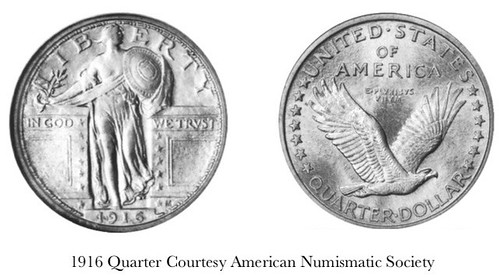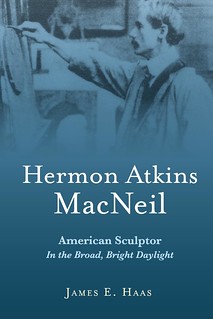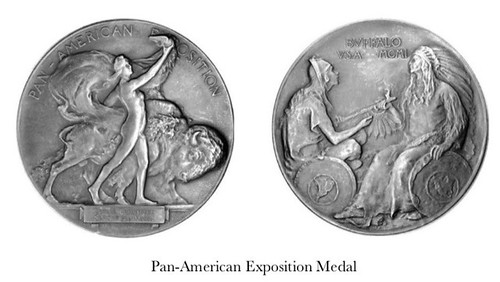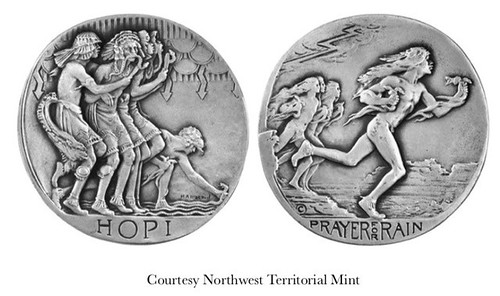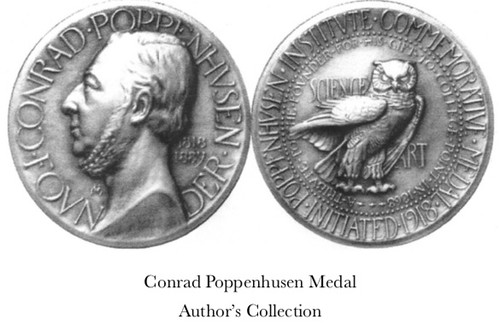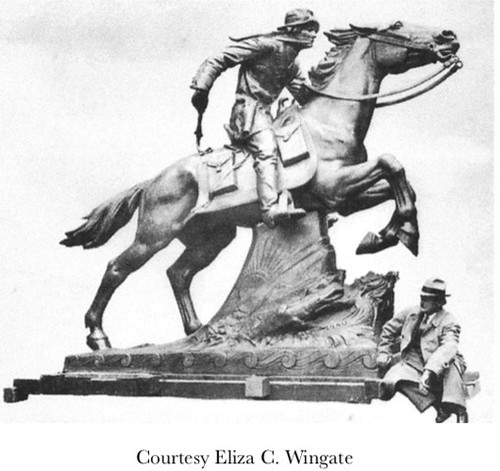
PREV ARTICLE
NEXT ARTICLE
FULL ISSUE
PREV FULL ISSUE
V25 2022 INDEX E-SYLUM ARCHIVE NEW BOOK: HERMON ATKINS MACNEILBob Van Ryzin alerted us to a new book by Jim Haas on sculptor Hermon Atkins MacNeil, the creator of the Standing Liberty Quarter and other numismatic products. Thanks. -Editor
Hermon Atkins MacNeil has been written about in a variety of anthologies of American sculpture with brief, sometime quite serious essays, but never in a full book. Through the use of sound and thorough scholarship, Hermon Atkin MacNeil: American Sculptor in the Broad, Bright Daylight is the first comprehensive, straight-forward accounting of his life. He was born in 1866 and died in 1947. Producing more than 250 sculptural creations, he was one of the most accomplished and highly respected sculptors of his era, with a world-wide reputation for outstanding work. But to his neighbors in College Point, Queens, New York, where he lived and worked for forty-five years, what he did was equivalent to being an electrician or a school teacher, just a career, nothing special. The book delves into the details of his major and even not so major commissions, how each of his many works of art came into existence, and how they were seen through the eyes of his contemporaries, friends, writers, and critics who expressed opinions of his works within the context of the times in which they lived. Every day, in cities and towns across America, people pass by monuments, reliefs on buildings, or even glance at the face of a coin and never consider the human beings that brought them into existence, the discussions about the symbolism of the piece or even its placement. This book brings all of this to life, including details of the political and historical environment of the era, the accolades and the rejections. Included are endearing personal stories about this extraordinary artist's family, friends and background. In addition to a parallel narrative detailing the creative life of his wife Carol Brooks MacNeil, much attention is paid to her fellow women sculptors and the challenges they faced. Including over 200 photographs and images, this is a book to be read and enjoyed by art lovers, especially those with an interest in sculpture, and to be available in the reference library of every art school, college and university, as well as each city or town where one or more of his works is on display.
About The Author Author Haas provided these additional notes and images. Thank you! -Editor The book is 313 pages long and contains over 200 photographs. Tracing his life from his earliest years through the various stages of his education, professional and personal life, I write about the medals he designed, his Quarter, and how important to his career was his uncle Henry Mitchell. I believe Henry Mitchell played some role in his interest in medals, as may have Henri Chapu, a master in low relief who taught medallic art at the Acade´mie Julian. He was MacNeil's teacher in 1889-1890.
If anyone is responsible for MacNeil's development in this métier, it would have to be Karl Bitter who I suggest asked him to design the Medal of Award for the Pan-American Exposition held in Buffalo, 1901. Indians appear on this medal, along with the Hopi Prayer for Rain. MacNeil's award of the first Rinehart scholarship, a distinction shared with Alexander Phimister Proctor, was heavily influenced by the twenty-three Indian pieces he fashioned during the summer of 1895 in the southwest. He also did a prospector and a cowboy, but it was the Indian who had There are those who believe that MacNeil should have not veered from that which brought him to fame, but as much as the classical beauty surrounding him captivated Hermon, he could not, nor did he want to get the Indian out of his soul. That being said, his objective in life was to earn his living through his art and like many artists, he diversified, not necessarily by choice, but by opportunity and his own need to expand his artistic horizons. As fate would have it, his last large-scale work, an equestrian, was not that of an Indian, nor a cowboy, but that of a horseman, a Pony Express rider dedicated in St. Joseph, MO in 1940. He thought of it one of his best.
For more information, or to order, see:
Wayne Homren, Editor The Numismatic Bibliomania Society is a non-profit organization promoting numismatic literature. See our web site at coinbooks.org. To submit items for publication in The E-Sylum, write to the Editor at this address: whomren@gmail.com To subscribe go to: https://my.binhost.com/lists/listinfo/esylum All Rights Reserved. NBS Home Page Contact the NBS webmaster 
|
